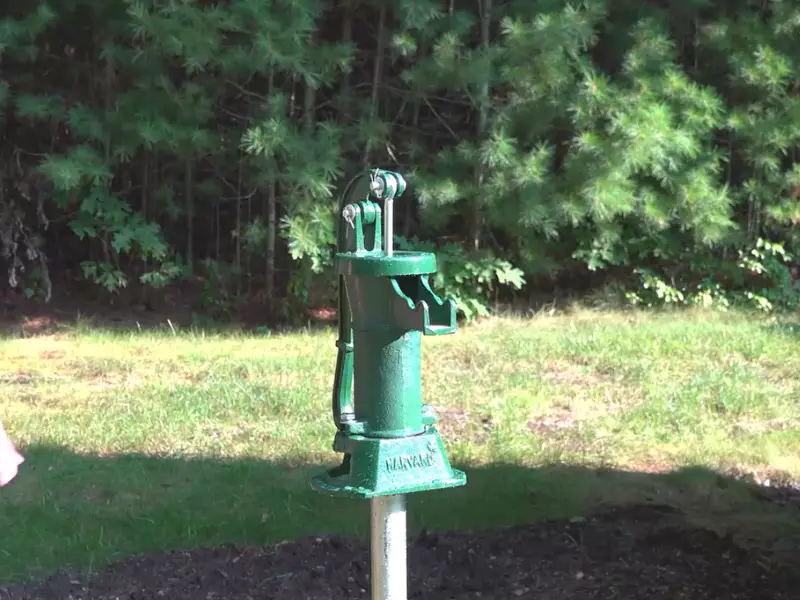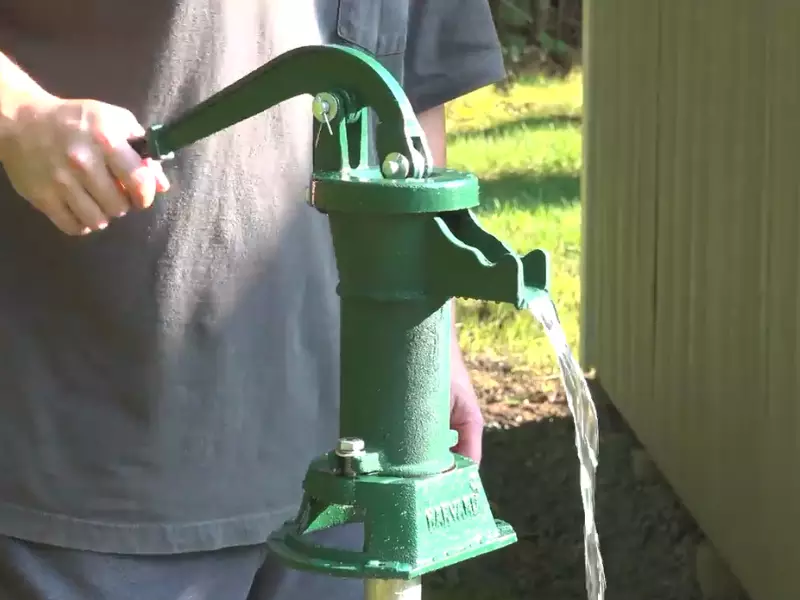Well water, a primary source for many households, varies in temperature based on depth and other influencing factors. Temperature not only affects usage but also has implications for water quality. Knowing the difference between shallow and deep well temperatures is crucial for multiple reasons.
Shallow wells typically lie closer to the surface, making them susceptible to temperature fluctuations due to external factors. On the other hand, deep wells remain relatively consistent in temperature, primarily influenced by geothermal heat.
The significance of well water temperature reaches beyond mere usage. It plays a pivotal role in ensuring safety, optimizing energy, and maintaining the efficiency of water-related appliances.
Shallow Wells: Key Features
Definition and Depth Range
Shallow wells, colloquially termed as “dug” or “bored” wells, are usually less than 50 feet deep. They extract water from the uppermost water table. Due to their limited depth, the water sourced is primarily influenced by the environmental conditions and activities at or near the ground’s surface.

Temperature Factors
- Solar Influence: As the closest water source to the Earth’s surface, shallow wells are directly affected by solar radiation. Continuous exposure to sunlight can significantly heat the surface, especially during summer months. This heat then seeps downwards, increasing the temperature of the shallow well water. In regions with intense sunlight or longer daylight durations, the impact is even more pronounced.
- Ground Surface Temperature: Apart from direct sunlight, the type of ground cover plays a role too. For instance, surfaces like asphalt or concrete absorb and retain more heat compared to grass or soil. Similarly, areas with deforestation or land cleared for agriculture or urbanization can experience higher shallow well temperatures. Moreover, rainfall can cool down the surface, indirectly leading to cooler well water in some seasons.
Typical Temperature Range
The water temperature in shallow wells usually varies between 50°F to 70°F. However, this range isn’t rigid. Depending on the geographical location, altitude, and specific climatic conditions, these figures can shift. For example, in colder regions, even during summers, shallow well water might remain at the lower end of this spectrum.
Deep Wells: Core Insights
Definition and Depth Differences
Deep wells, sometimes referred to as “drilled” wells, go much deeper into the earth, often exceeding 100 feet and, in some cases, even reaching 1,000 feet or more. These wells tap into the deeper aquifers, ensuring a more isolated and protected water source, less influenced by surface activities.
Temperature Influences
- Geothermal Heat: Earth’s internal heat, or geothermal energy, plays a dominant role in determining the temperature of deep wells. As one delves deeper into the Earth’s crust, the temperature increases. This phenomenon is termed the geothermal gradient, where the temperature rises by about 25-30°C for every kilometer depth in most parts of the world. As a result, deep well water tends to be warmer and more consistent in temperature.
- Lack of Solar Impact: The profound depth of these wells ensures that they’re shielded from the daily and seasonal temperature fluctuations experienced on the surface. Solar radiation doesn’t penetrate deep enough to affect them, making them less susceptible to sudden temperature changes.
Typical Temperature Range
Generally, deep well water temperatures hover between 54°F to 77°F. Again, the exact temperature can vary based on the well’s depth and location. In regions with significant geothermal activity, such as areas near volcanoes or tectonic plate boundaries, deep well water might be considerably warmer.
Effects of Seasonal Changes
The dance of the seasons leaves its mark on well water temperatures, especially in the case of shallow wells.
How Seasons Impact Shallow Wells
- Winter: The cold air and freezing ground surface can significantly reduce the temperature of shallow wells. In areas with snowfall, the snow acts as an insulator, slowing down the cooling process. Still, once the ground freezes, it can lead to considerably chilled well water.
- Summer: Conversely, the warm summer months can elevate the temperature of shallow well water. Extended daylight, intense sun, and the heated ground surface collectively contribute to warmer water.
Deep Wells’ Resistance to Change
Owing to their depth, deep wells demonstrate a robust resilience against seasonal fluctuations. The deep aquifers they tap into remain relatively unaffected by surface temperature changes. While there might be minute variations, they are often negligible and don’t impact water usage significantly.

Benefits of Temperature Knowledge
Being well-informed about your well water’s temperature can offer a range of advantages.
- Enhanced Water Quality: Water temperature plays a pivotal role in determining solubility levels. Certain minerals and gases dissolve better in cooler or warmer waters. Knowing your well water temperature can help in understanding its mineral content better.
- Energy Savings: Whether you’re using the water for bathing, cooking, or heating your home, knowing its base temperature can help you adjust your appliances accordingly, conserving energy.
- Equipment Longevity: Devices like water heaters, filters, and purifiers work optimally within specific temperature ranges. Ensuring the incoming well water adheres to these ranges can extend the equipment’s lifespan and efficiency.
Potential Issues & Solutions
Temperature can act as a diagnostic tool, highlighting issues or challenges.
Temperature Extremes: Causes
When your well water temperature doesn’t align with the typical range, it’s a sign of potential disturbances. These could arise from:
- Intense Weather Changes: Extended heatwaves or cold snaps can push temperatures out of the usual range.
- Groundwater Contamination: Chemicals or pollutants seeping into the water can alter its temperature.
- Equipment Malfunction: Sometimes, the machinery used to pump and store the water might be at fault.
Mitigating Temperature Fluctuations
While you might not have control over all factors, some steps can help stabilize well water temperature:
- Insulation: Especially for shallow wells, using insulating materials around the well or its storage units can mitigate extreme temperature changes.
- Landscaping: Planting trees or creating shaded areas around the well can reduce the direct impact of sunlight.
- Regular Maintenance: Ensuring the well equipment is in prime condition can prevent artificial temperature shifts.
Difference in Taste & Quality
Every sip of water carries the tale of its journey, and temperature plays a crucial role in shaping this narrative.
Temperature and Taste Perception
The temperature at which you consume water can subtly alter its taste. While this doesn’t change the water’s inherent composition, our taste buds perceive flavors differently at various temperatures. For instance, cold water often feels more refreshing and might suppress certain underlying tastes.
Impact on Dissolved Minerals
Temperature affects the solubility of minerals. Warm waters might dissolve more minerals, lending a distinct taste compared to cooler waters.
Safety and Bacterial Growth
Microorganisms thrive at specific temperatures. Warm and stagnant water can turn into a hotspot for bacterial growth, posing health risks. It’s imperative to ensure that well water remains at a safe temperature, and if there are concerns, considering purification or treatment methods becomes essential.

Water Temperature Impact on Domestic Use
How the water feels and behaves during household chores or leisure activities is substantially influenced by its temperature.
Bathing & Showering
The right water temperature is crucial for a comfortable bathing experience. Water from deep wells, being relatively warmer, may require less heating, especially during colder months, resulting in energy savings. Conversely, overly warm water in summers from shallow wells might necessitate cooling, impacting water heaters’ efficiency.
Cooking
For culinary enthusiasts, the temperature of the water can be a decisive factor in certain recipes. For instance, specific dishes might call for lukewarm or tepid water. Knowing the baseline temperature of your well water can aid in achieving the right warmth swiftly.
Laundry
Different fabrics and stains demand varied water temperatures. While warm water is favored for its superior cleaning prowess, especially for oily stains, cooler water is gentler on dyes and delicate fabrics. With an understanding of your well water’s usual temperature, selecting the right washing cycle becomes simpler.
Gardening
For those with a green thumb, water temperature can influence plant health. Cold water might shock sensitive plants, hampering their growth. On the other hand, warm water can accelerate the evaporation rate, leading to quicker soil drying. Tailoring your watering practices based on well water temperature can foster a flourishing garden.
Selecting the Right Well Type for Your Needs
Choosing between a shallow or deep well largely hinges on multiple variables, including water temperature. Let’s explore how to make an informed decision:
Assessing Geographical Factors
Study the geographical and climatic peculiarities of your region. If you reside in an area with extreme seasonal temperature swings, a deep well might be a better choice due to its stable temperature profile.
Water Demand
Shallow wells, being closer to the surface, are more susceptible to drying up, especially during droughts or extended periods of low rainfall. For households with high water consumption, deep wells, tapping into more abundant aquifers, might be more reliable.
Budget Considerations
Deep wells, given their profound depth and the machinery needed, are typically more expensive to drill and maintain. If budget constraints are a concern, it might be prudent to weigh the long-term costs against the immediate savings a shallow well might offer.
Water Quality Preferences
As discussed earlier, the temperature of water can influence its mineral content and taste. If you have specific preferences in this regard, it can play a role in determining the well type best suited for you.
Frequently Asked Questions
Why is my shallow well water so cold in summer?
Factors such as groundwater recharge from rains or a shaded ground surface can keep the shallow well water cooler even during warmer months.
How can I keep my deep well water consistently warm?
Given the depth and geothermal influence, deep well water usually remains consistent. If fluctuations are noticed, it might be due to equipment issues or external contamination.
Can the taste of well water change with temperature?
Yes, temperature can influence mineral dissolution, affecting the taste. Also, warmer temperatures can make certain tastes more pronounced.
Conclusion
Water, often dubbed as the essence of life, wears many hats. It’s not just about quenching thirst but intricately woven into the fabric of our daily lives. The temperature of well water, be it from a shallow or deep source, plays a pivotal role in shaping our experiences with it.
From the tactile pleasure of a warm shower to the gustatory delight of a perfectly brewed cup of tea, the water’s warmth or coolness is a silent participant. By appreciating the nuances of well water temperature, one can not only ensure optimal domestic usage but also safeguard the water’s quality and richness.
Making informed decisions, be it about selecting the right well type or understanding the temperature’s broader implications, paves the way for harmonious coexistence with this invaluable resource.